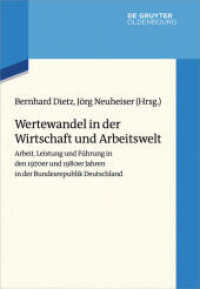Full Description
This book presents an innovative and novel approach to linguistic semantics, starting from the idea that language can be described as a mechanism for the expression of linguistic Meanings as particular surface forms, or Texts. Semantics is specifically that system of rules that ensures a transition from a Semantic Representation of the Meaning of a family of synonymous sentences to the Deep-Syntactic Representation of a particular sentence. Framed in the terms of Meaning-Text linguistics, the present volume closes the publication of the three volume series. It discusses in detail several linguistic notions crucial to the development of Meaning-Text models of natural languages: semantic and syntactic actants, government pattern, lexical functions, linguistic connotations, phrasemes, the meaning of grammatical cases, and linguistic dependencies. The notions under analysis are illustrated from a variety of languages. Reflecting the author's life-long dedication to the study of the semantics and syntax of natural language, this book is a paradigm-shifting contribution to the language sciences, whose originality and daring will make it essential reading for linguists, anthropologists, semioticians, and computational linguists.
Contents
1. Author's Foreword; 2. Acknowledgments; 3. Abbreviations and Notations; 4. Part V Linguistic Excursuses; 5. Introduction; 6. Actants; 7. Government Pattern: Government in the Lexicon; 8. Lexical Functions: Description of Lexical Relations in a Lexicon; 9. Lexical Connotation; 10. Phrasemes; 11. Do Nominal Cases Have Meaning?; 12. Dependency in Language; 13. Concluding Remarks; 14. General Acknowledgments; 15. References; 16. Index of Terms, Names and Concepts; 17. Index of Linguistic Items; 18. Language Index; 19. Definition Index







